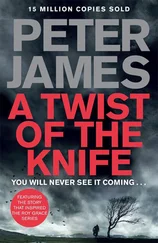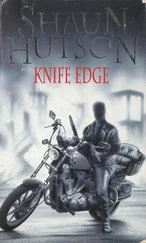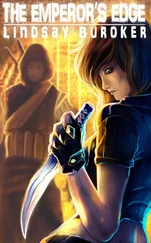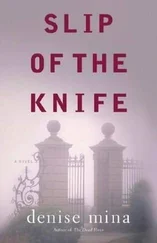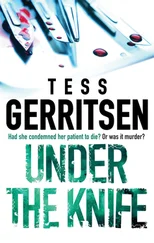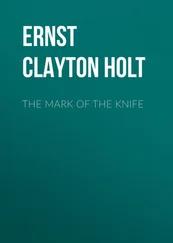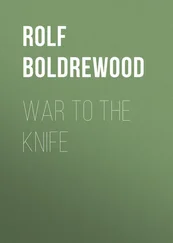I didn’t see the poor lady again until the inquest, where she sat unaccompanied, listening intently. She bore no malice, nor was the coroner critical in any way. The gruesome fact was that I had unintentionally sawn open that heart and emptied the circulation onto my clogs. In my own mind, I knew that a CT scan would have prompted me to cannulate the man’s leg vessels myself, which could have averted the tragedy and was something that I always did after that. Undeterred, I reopened a sternum for the fifth time in front of television cameras just weeks later.
Most deaths in surgery are wholly impersonal. The patient is either covered in drapes on the operating table or obscured by the grim paraphernalia of the intensive care unit. As a result, my most haunting experiences of death stemmed from trauma cases. The sudden, unexpected process of injury pitches an unsuspecting individual into their own Dante’s Inferno. Knife and bullet injuries were predictable and easy for me. Cut open the chest, find the haemorrhage, sew up the bleeding points, then refill the circulation with blood – such cases always provoked an adrenaline rush, but usually involved young, healthy tissues to repair.
My own worst nightmare wasn’t caused by a gun or a knife. As a young consultant I was once fast-bleeped to the emergency department to help with an incoming road accident. It was still what was called the ‘swoop, scoop and run’ era, so the patient was being brought in directly without transfusion of cold fluid to screw up the blood clotting. With foresight and sensitivity, the police had already warned reception what to expect, but unfortunately I’d not been party to that. I was outside in the ambulance bays enjoying the sunshine when the vehicle came thundering up the drive, siren blaring and blue lights flashing. When the rear doors were thrown open, the crew wanted a doctor to take a look before they risked moving the patient again.
I could hear the whimpering before I could see the girl, but I knew from the paramedic’s grim expression that it was something unpleasant. Unusually awful, in fact. The teenage motorcyclist was lying on her left side, covered by a blood-soaked white sheet. This sheet and what I could see of her face were the same colour. The poor girl had been drained of blood. Normally she would have been shunted quickly through to the resuscitation room, but there was every reason not to rush.
The paramedics quietly and deliberately drew back the sheet so I could see that the girl was transfixed by a fence post. A witness had watched her motorcycle swerve to avoid a deer, then she veered off the road, smashing through a fence into a field. She was left skewered like meat on a kebab stick. The fire brigade eventually released her by sawing through the fence and lifting her free. This left the stake protruding from her blood-soaked blouse. The response of the gathering team was to glare incongruously at the gruesome transfixion and ignore that horrified face behind the oxygen mask.
I took her cold, clammy hand more in clinical assessment than humanity. She was in circulatory shock, not to mention profound mental turmoil. Her pulse rate was around 120 beats per minute, but the fact that I could feel it suggested that her blood pressure was still above 50 mm Hg. Before we moved her I needed to scrutinise the anatomical features of the injury so as to predict what damage we would be confronted with. I had seen several cases of transfixion trauma where the patient survived because the implement narrowly missed or pushed aside all the vital organs. Here the degree of shock indicated otherwise. It was time to get some cannulas in place in a calm and controlled manner, and bring group O negative blood ready to transfuse her. And for pity’s sake, she deserved a slug of morphine to take the edge off the sheer terror of her predicament.
Some things I knew instinctively. Had the stake damaged the heart or aorta she would have bled out at the scene. Traumatised small arteries will go into spasm, clot and stop the bleeding themselves as long as injudicious clear fluid infusion doesn’t raise the blood pressure and blow the clots off. So I surmised that most of the bleeding must be coming from the veins, which do not constrict. I asked the nurses for some scissors to remove her clothing, now stiff with dried blood. It was like cutting through cardboard and opening a window on the grim reality of her situation.
Her pleading brown eyes remained firmly fixated on the stake. I could make out the jagged ends of ribs protruding through macerated fat and pale, bruised skin. The post had entered directly below her right breast, marginally to the right of the midline, and emerged from her body higher up in her back, suggesting that she had slid feet first after tumbling from her motorcycle. My three-dimensional anatomical knowledge left me in no doubt which structures had been damaged. The post must have taken out her diaphragm and liver, the lower lobe of her right lung and probably the largest vein in the body, the inferior vena cava. The lung wasn’t a problem. But if her liver was pulped and the veins torn off the cava, I knew that we couldn’t fix her. Scrutiny of the post protruding from her back confirmed my fears – there were fragments of both liver and lung on the wooden shards. Everyone knows what liver looks like from the butcher’s, while youthful lung is pink and spongy. I recognised both, and it made me sad.
In just seconds on a Saturday morning she had gone from vivacious carefree student to dying swan transfixed like a vampire. With every agonising breath, blood slopped from the wound edges. Whatever the way forward, I had to talk to her. I edged around the trolley and knelt by her head to distract her as the emergency doctors painfully probed with needles to locate an empty vein. With blood and froth dripping from her mouth, she was finding it difficult to breathe, let alone speak. We needed to put her to sleep right there in the ambulance, then get a tube into her windpipe – a seemingly impossible task in that awkward position. By now I was pretty sure that whatever we did she would die. If not soon, it would be in days or weeks as a result of infection and organ failure in the intensive care unit. So whatever else we attempted to do for her, we had to be kind. Do as little as possible to add to her pain.
Staring directly into her eyes I asked her name. I was simply trying to inject a semblance of humanity into the proceedings and relieve the brutality of it all. Stuttering between breaths, she told me she was a law student, like my own daughter Gemma, which added to my discomfort. I took her icy cold fingers in my right hand and rested my left hand on her hair, hoping to obscure that stake from her gaze.
With tears streaming down her cheeks she murmured, ‘I’m going to die, aren’t I?’
At that point I ceased being the surgeon because I knew she was right. For her last agonising moments on earth I could only comfort her. So I would be her substitute dad for that time. I held her head and told her what she wanted to hear. That we would put her to sleep now and when she awoke everything would be back in its place. The stake would be gone. The pain and fear would be gone. Her shoulders dropped and she felt less tense.
The gadget clipped onto her index finger showed very low oxygen saturation, so we had to move her to give the anaesthetist his chance with the endotracheal tube. Only then could we begin a token effort at resuscitation. I extended my hand to feel her belly, which was distended and tense. As we explained the need to move her, I could sense her consciousness fading.
She whispered, ‘Can you tell mum and dad that I love them, and I’m sorry? They never did want me to have that bike.’
Then she coughed up a plug of blood clot. As she rolled backwards the stake shifted, grating audibly against her shattered ribs. Her eyes rolled towards heaven and she slipped away. Whatever blood she had left in her circulation was pouring out over me. But I didn’t mind. It was a privilege to be there with her. The junior doctors from the resuscitation room stirred, intending to begin cardiac massage. Without hesitation I told them to back off. What the fuck did they expect to achieve?
Читать дальше

